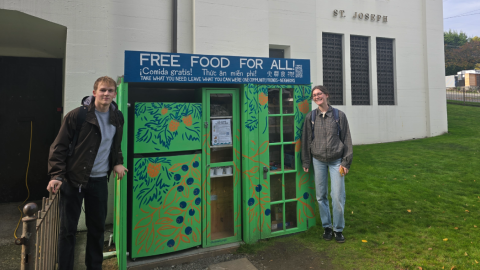The University of Washington switched to 100% online learning just days after state public health officials announced the nation’s first death attributed to COVID-19 on February 29.
Suddenly, faculty in the UW Department of Environmental & Occupational Health Sciences (DEOHS) found themselves retooling in-person classes for virtual learning and rethinking everything from fieldwork to final exams.
DEOHS students worked with faculty and staff to quickly adjust their research projects, lab work and presentations of thesis and dissertation research to the new normal of online lectures, remote lab training and virtual small-group discussions in Zoom breakout rooms.
“It’s been impressive to see how our faculty and students have adapted and even thrived in the face of such a rapid transition to remote learning,” said Jon Sharpe, instruction support specialist in the DEOHS Office of Academic Services.
“While there have certainly been pedagogical and technological challenges along the way, mid-quarter course evaluations were generally positive and reflected our instructors’ success at balancing academic rigor with flexibility and compassion in these challenging times.”
A video field trip
As an example, Sharpe points to Dr. Andrew Dannenberg, DEOHS affiliate professor, who teaches a health impact assessment course in the department.
Dannenberg worked with a student to turn what would have been an in-person site visit for 27 students into a virtual field trip to a redevelopment project in Seattle’s Interbay neighborhood.
Other faculty members have successfully converted in-person lab classes to remote instruction and shifted class presentations by students to a video format.
A quick pivot in the lab
For now, student fieldwork activities are mostly on hold. But for students with ongoing research and data collection, many have been able to continue their work.
DEOHS doctoral student Sarah Philo said she was able to quickly transition her ongoing lab work to focus on surveillance of the novel coronavirus in wastewater around the Seattle area.
Recognized by the UW as essential personnel, Philo and her teammates are doing as much data analysis as possible at home, though they are also allowed in DEOHS labs to run experiments. They follow social distancing guidelines in the lab and don masks and other PPE when distancing is not possible.
Another PhD student, Claire Schollaert, said: “I've been lucky in that my work has been minimally impacted by COVID-19. Most of my current research focuses on climate-related exposure assessment using modelling and remote sensing methods with no ongoing or upcoming fieldwork plans.”
Both students are also trainees of the department’s Northwest Center for Occupational Health and Safety.
Pros and cons of online learning
The shift to online instruction has come with a few bumps along the way, from dropped connections to occasional security issues. Some students and faculty worry that students may miss out on key concepts without the traditional in-person experience.
Yet there are bright spots, too. In some cases, faculty have noticed more student participation in the transition to online learning.
“There's something about having the safety of that physical barrier of being online that I feel like more students are asking questions and participating,” said Stephanie Farquhar, acting associate dean for education in the School of Public Health and DEOHS clinical professor.
Serving their communities
Trina Sterry, DEOHS manager of Student and Academic Services, recognizes the challenges that students face but also points to their resiliency.
“Based on my interactions with our current students, I'd say that they are very motivated to use their skills to help with the pandemic in any way they can,” Sterry said.
“Students who have traveled back home are reaching out to their local health departments to volunteer. That's not to minimize the concern and anxiety that many students are experiencing as well, but they are definitely feeling called to action,” Sterry said.




